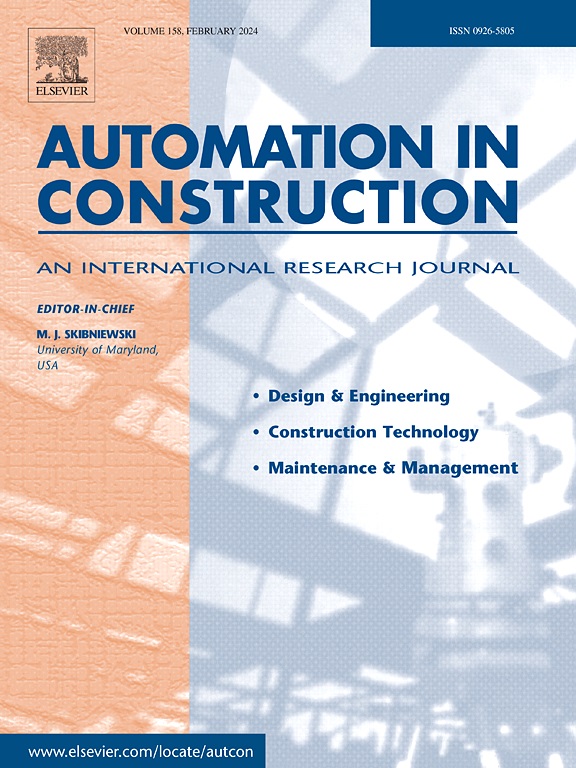Tunnel crack assessment using simultaneous localization and mapping (SLAM) and deep learning segmentation
IF 11.5
1区 工程技术
Q1 CONSTRUCTION & BUILDING TECHNOLOGY
引用次数: 0
Abstract
Artificial intelligence algorithms and multi-sensor technologies are advancing tunnel crack detection. However, image-based detection methods fail to account for tunnel section curvature, limiting their ability to represent the spatial geometry of cracks. To address these problems, this paper presents a tunnel crack assessment method combining simultaneous localization and mapping (SLAM) with deep learning-based segmentation. The SLAM algorithm reconstructs the tunnel point cloud map, and a two-dimensional (2D) convex hull point cloud unfolding with a cloth simulation filter (CSF) algorithm is applied for denoising. A deep learning segmentation model is used to segment the tunnel cracks. The cracks are projected into a three-dimensional (3D) point cloud map, and the crack length and spatial location are calculated. Field tests demonstrate that the method reduces tunnel reconstruction time to 27 s (a 99 % time saving), with a maximum radius error of 0.03 m and accurate 3D crack projections.
基于同时定位与映射(SLAM)和深度学习分割的隧道裂缝评估
人工智能算法和多传感器技术正在推动隧道裂缝检测的发展。然而,基于图像的检测方法不能考虑隧道截面曲率,限制了它们表示裂缝空间几何形状的能力。针对这些问题,本文提出了一种结合同步定位与映射(SLAM)和深度学习分割的隧道裂缝评估方法。SLAM算法重建隧道点云图,采用二维(2D)凸壳点云展开布模拟滤波(CSF)算法去噪。采用深度学习分割模型对隧道裂缝进行分割。将裂缝投影成三维点云图,计算裂缝长度和空间位置。现场试验表明,该方法可将隧道重建时间缩短至27 s(节省99%的时间),最大半径误差为0.03 m,三维裂缝投影准确。
本文章由计算机程序翻译,如有差异,请以英文原文为准。
求助全文
约1分钟内获得全文
求助全文
来源期刊

Automation in Construction
工程技术-工程:土木
CiteScore
19.20
自引率
16.50%
发文量
563
审稿时长
8.5 months
期刊介绍:
Automation in Construction is an international journal that focuses on publishing original research papers related to the use of Information Technologies in various aspects of the construction industry. The journal covers topics such as design, engineering, construction technologies, and the maintenance and management of constructed facilities.
The scope of Automation in Construction is extensive and covers all stages of the construction life cycle. This includes initial planning and design, construction of the facility, operation and maintenance, as well as the eventual dismantling and recycling of buildings and engineering structures.
 求助内容:
求助内容: 应助结果提醒方式:
应助结果提醒方式:


